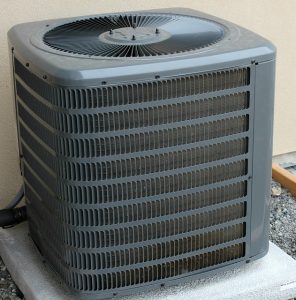Do you use a heat pump system to keep your home toasty in the winter? How much do you know about it?
Winter is a harsh season, especially in regions where it snows or the temperatures drop below zero. People in those areas have to be constantly aware of weather conditions and take enough precautions.
One such precaution is keeping your house warm. When it gets below zero temperature out there, or it starts to snow badly, the best course of action is to stay at home and try to keep yourselves warm.
To keep your house warm, you may use various apparatus. One such machine that stands out is the heat pump. Heat pumps are electronic apparatus that sucks the warmth out of the environment and transfers it to your house to keep it warm.
Five Facts About Heat Pumps
Much like furnaces, this uses electricity instead of burning fuel. Heat pumps are a convenient heating machine as they can be fully automated. If you are thinking about buying one of these units for your home, this article will try to help you make that decision by providing you with some useful information about heat pumps.
1 – Always functional
A common mistake about the heat pumps is that they won’t be able to produce heat in a hard winter. This is a conceptual mistake. The principle of a heat pump is that it transfers heat from nature to your house. So it’s only natural to think that when it’s minus temperature out there, the pump won’t be able to produce heat.
But that’s not actually how heat pumps function at all. As long as the temperature stays above the absolute zero temperature (-273 degree Celsius), the heat pump will always be able to extract heat from nature.
So it’s always functional, even in extremely cold weather. But there is a question about efficiency here. Does it become inefficient after a point for the pump to produce heat? In simple terms, does the input that is electricity outweigh the heat energy that is the output? Well, a simple distinction is when the temperature reaches zero, it becomes inefficient to run heat pumps for home heating.
2 – Defrost
Fear not if you indeed reach zero temperature and start to worry about the quality deterioration of the heat pump placed out in the cold. It is a sophisticated machine, and it uses the defrost method to thaw the ice on the machine before becoming fully functional again.
The defrost process is the reverse process of that of a heat pump. In this case, the pump takes heat from the home to liquify the ice on the outdoor apparatus so that it can become functional. You might be worried about this process. To put your mind to ease, let us tell you that a the defrosting process is very powerful, and it takes very little time. So it will not drain all the heat from your household and leave you shaking.
However, be wary if your heat pump’s defrost mode kicks in very frequently. In that case, you may have a mechanical problem rather than a weather issue. In case of such occurrences, turn off your heat pump and immediately contact any nearby workshop for assistance.
3 – The dual heating method
If you live in an area where there is constantly negative temperature or temperatures reaching zero very frequently, then this method of heating might be an effective one.
The dual heating method consists of an electric model as well as a gas furnace. The gas furnace uses gas to produce heat so it works perfectly fine even in negative temperatures.
Thus, using a gas furnace with heating pumps when the temperature reaches zero might be a good idea as it will be the more efficient choice. Plus, it will play a good role in balancing your heating bill.
Most of the heat pumps come with a built-in emergency heat option. This emergency heat is produced by consuming extra energy on cold winter days when the temperature is too low. As it uses a load of power to create heat at low temperatures, it is not at all an efficient option. If your area is constantly getting lower temperatures, then you should probably have a gas furnace as the main heating apparatus while the heat pumps could be the heating system alternative for your house.
4- Programmable
The best thing about these units is that they can be turned into a fully automated machine. As it runs on electricity, by reducing or increasing the power supply, the heat can be managed automatically.
Most of the heat pumps out there have programming options where you could set heat presets according to your choice, and the machine will automatically pump heat according to the temperature of the house. You will not have to change the heat every time manually.
This function is not available in gas furnaces mainly because they are gas-driven, and such accurate and fast temperature fluctuation is not possible from them. In this sense, the heat pumps are digital machines, whereas gas furnaces are analog mostly.
5 – Maintenance
Being a smart and digital machine, these machines usually require low maintenance. But just like any other household item, heat pumps require some simple time to time maintenance.
The filter in the unit is one of the things you will need to take care of periodically. Just like every other machine that force air into your room, the heat pumps, too, have an air filter, and it gets dirty very often. If you do not have a clean filter, the air quality of your house will degrade.
Take specialists’ help whenever necessary. Cooling experts can tell you what are the best practices involving heat pumps and what temperatures should be maintained. Maintenance specialists should check out your heating pump often. The machine will require a regular tune-up to stay functional.
The last maintenance tip is to clean ice debris from your unit. If the debris clogs important pieces of machinery, the pump won’t be able to push hot air properly. Thus, it will take in more power to produce less warmth.

The Bottom Line on Heat Pumps
Now that you are informed about the benefits of heating pumps and the responsibilities that come with the machine, you are ready to buy one for yourself and give it a try at your home.

